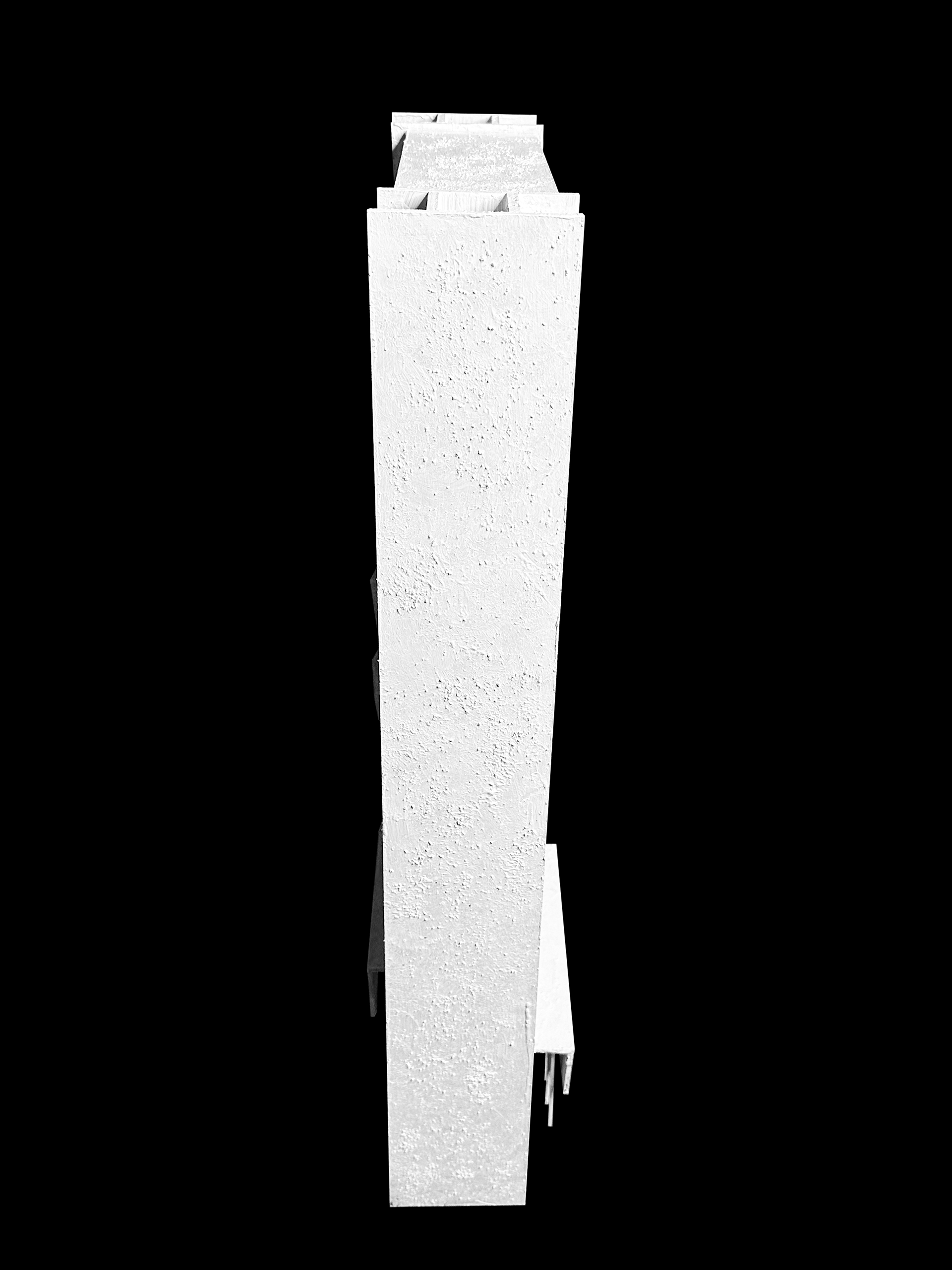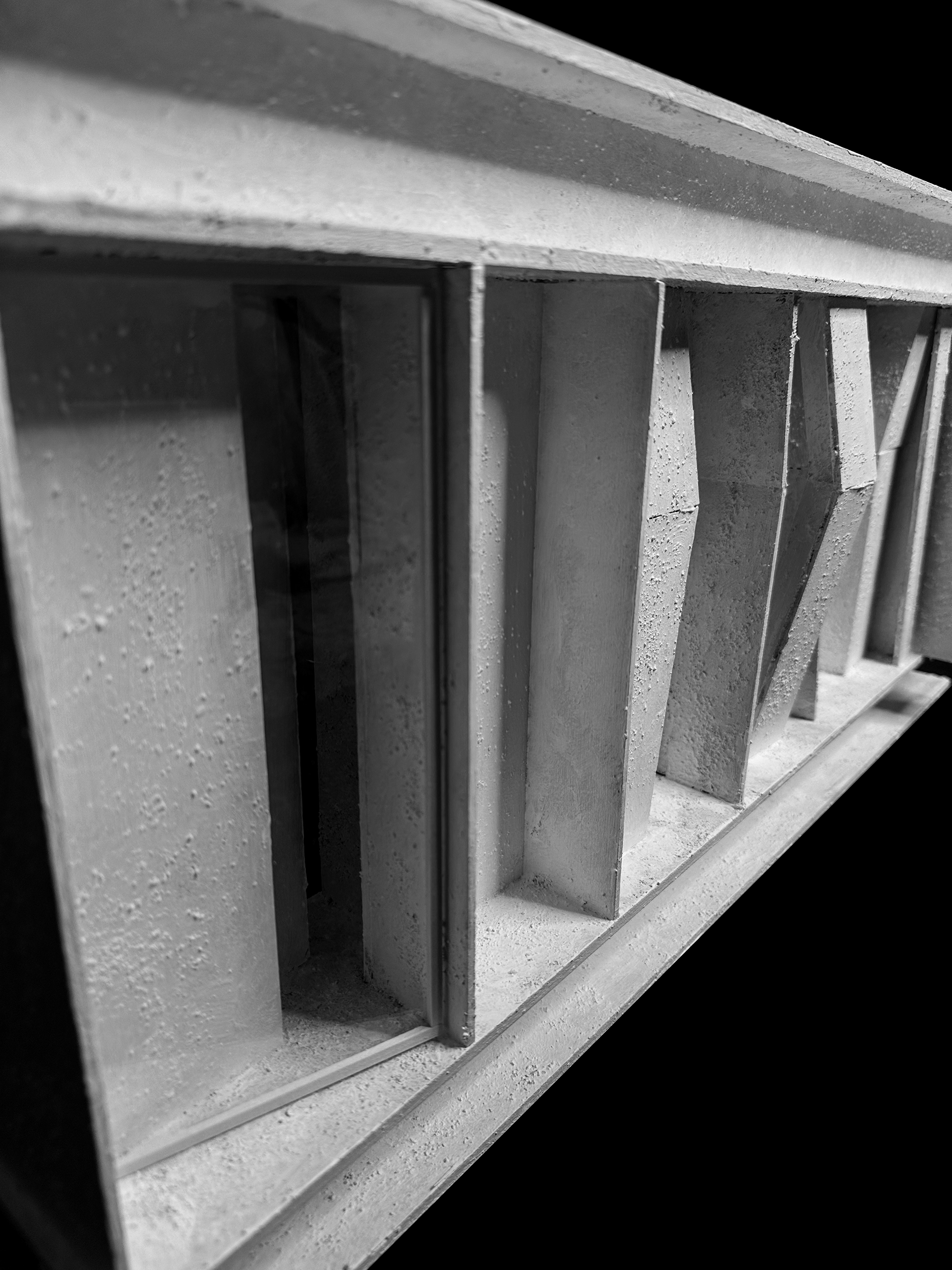The project objective was to create a part/panel/component responding to three performance criteria. To begin developing this performance criteria, I looked into the background of the Bolsa Chica itself. Upon my own research of the area, as well as the development of the panel, I formed the following criteria:
Social Interaction and Exchange
Ecology of Materials
The panel utilizes recycled steel elements from the oil pumpjacks for the vertical and horizontal elements of the facade, which are currently being removed from the areas surrounding the Bolsa Chica ecological reserve.
Social Interaction and Exchange
The part encourages interaction through its integrated seating as well as integrated bike paths for those biking through the Bolsa Chica reserve.
Environmental Resilience
The part features an aerodynamically curved facade, which significantly enhances the structure's wind resistance. The use of breaks in the facade itself allows the interior to self-regulate its temperature.
Panel Assembly
Panel perspective rendering
Model Photos












Stage Two of the project involved designing a small structure that utilizes the Stage One prototype unit (two-sided envelope membrane) as a component of a larger collective enclosure system. The small structure would be located in my selected ecology from Stage One, Bolsa Chica. The program for the small structure is an artist-in-residence live/work space modeled after the National Parks Art Foundation program. The small structure would serve as a multidisciplinary artist-in-residence live-work space for short-term stays (30-60 days), providing a contemplative environment for creative research away from the distractions of everyday life.
My approach reflects the original intention of industrial reuse, as reflected in the project's first stage, which involves reutilizing pumpjack components for the structural support systems within the small structure itself. The structure features a unique two-layer exterior system, comprising the original horizontal steel membranes from the panel design and a layer of glass to enclose the structure, as well as an open-air bottom half that allows air to pass through the structure. The artist's work area is in sync with the patterns of the steel exterior, forming the working desk itself and existing on a rotating axis. This allows the desk to merge with the sundeck, expanding the interior workspace into the marsh.
Structure Axon
perspective section



